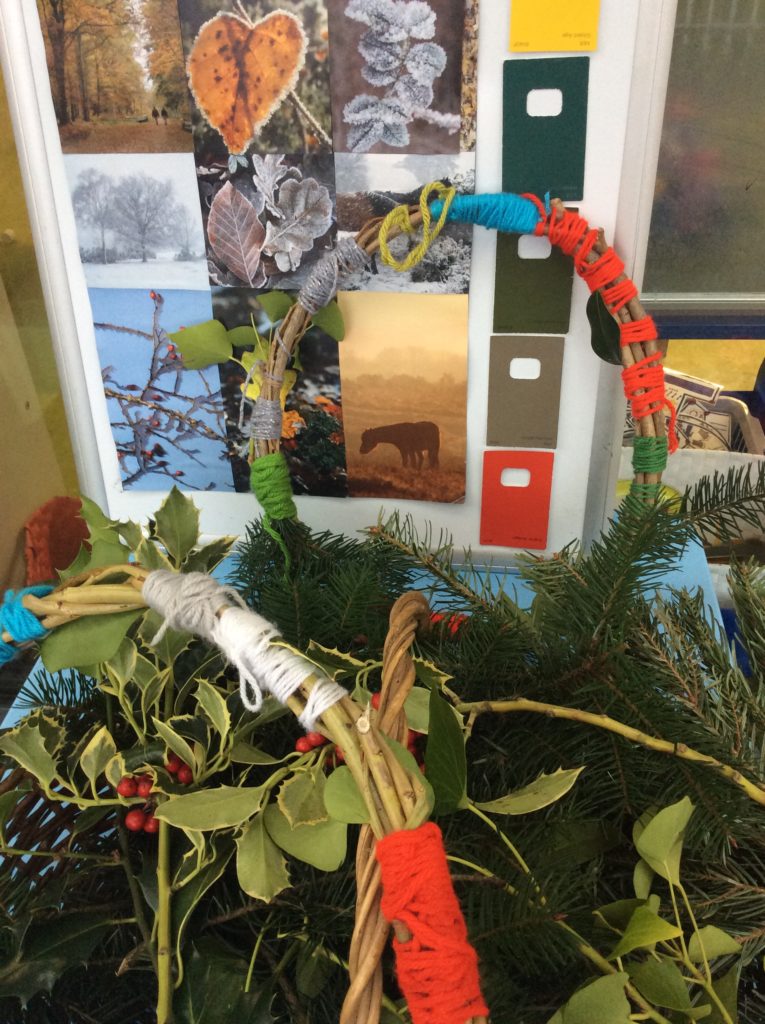
There’s no such thing as bad weather, just unsuitable clothing. So put on something waterproof, some sturdy footwear and a favourite woolly hat – now you’re ready for an outdoor adventure!
Although its quieter in winter and the woodlands seem empty of wildlife there are things to see and do – if you know where to look. With my groups, I like to focus on wintertime colours which helps to make nature more visible and hidden wildlife appear before your eyes! Here are some ideas to get you started.
- Winter mood board: Start your winter wander with a short discussion about winter; What does winter look like? Feel like? What winter colours are their favourite? I use an A3 board to display a collage of winter pictures cut out from magazines with paint sample cards – whites, blues, grey to help represent weather, and dark greens to represent evergreen foliage. This is a lovely way for groups to share their knowledge.
- Evergreen colour matching: Groups are introduced to a selection of evergreen foliage – ivy, holly, fir. Then using a basket with a selection of different green paint sample cards, individuals are invited to choose a colour card and challenged to find a perfect match in nature. This helps groups to explore and focus on the many different shades of green which add a welcome splash of colour to the winter landscape. Demonstrate to groups that the front and back of a leaf is a different colour, and when held up to the light.
- Winter colours dream catcher: Invite group to decorate a willow hoop by wrapping different coloured wool around the hoop to represent their favourite winter colours. Sparkly white wool represents the frost and ice; light blue for crisp, blue skies. Small branches of evergreen foliage can also be tied in. This makes a special decoration and a learning prompt. Often, we discuss winter berries; bright red holly and the black ivy berries – important sources of food for birds during the winter.

- Early signs of spring: You can extend your winter colour search to include early springtime colours – daffodil, snowdrop and crocus leaves, buds and flowers. A small viewing frame helps to focus observations and reveal hidden nature that would otherwise be overlooked.
- Ice play: Don’t forget to give groups opportunities to explore and play with ice. Even a light frost creates amazing ice crystal patterns. Hoar frosts appear on branches, leaves and blades of grass when the temperature of the surface is below freezing and looks like a dusting of snow has fallen. Look at the world through a smooth piece of ice – magical!
